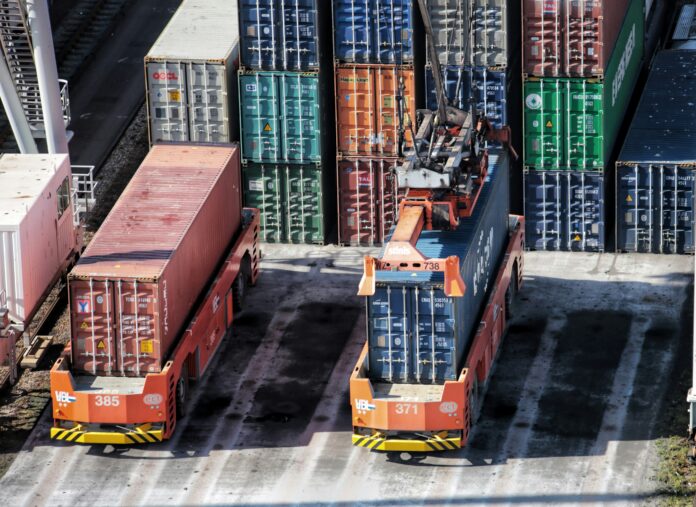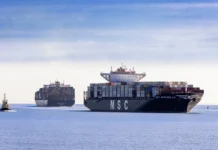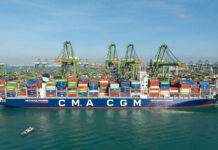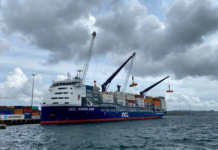
Typhoon Ragasa caused significant damage in areas of Taiwan and the Philippines as it passed through the South China Sea early this week before making landfall in China’s Guangdong province on Wednesday. Ragasa, now a tropical storm, is traveling along the coast toward Vietnam.
The typhoon closed all container ports and airports in Hong Kong and southern China since Monday, with some reopening Thursday. Hapag-Lloyd expects the damage and backlog to create delays of several days at the major ports in the region, with vessels at Yantian possibly held up by as much as a week.
The delays could be particularly disruptive for shippers still trying to move orders ahead of the Golden Week holiday in China starting October 1st. But, as many Asia – Europe shippers have likely already moved peak season goods, and with transpacific peak season pulled forward by tariff deadlines, the lull in demand expected in October could minimize the extent to which disruptions from the typhoon will be felt on the major tradelanes.
Transpacific container rates to the East Coast ticked up 2% last week to $3,426/FEU, but prices fell 5% to $2,185/FEU to the West Coast. Daily prices to the West Coast have slipped below $1,900/FEU so far this week.
Asia-Europe and Mediterranean spot rates continued their nearly uninterrupted since mid-July decline last week, with prices falling 15% on both lanes to $2,196/FEU to Europe and $2,421/FEU to the Mediterranean. The decline pushed rates on both lanes to their lowest levels since December of 2023. Rates continue to slide despite reports that enough capacity has been removed to reach a supply-demand balance, leading some to suggest that a price war is now contributing to falling rates on these lanes.
For all ex-China lanes though, congestion at Far East ports due to the typhoon – together with an increase in blanked sailings for October – could help carriers stabilize rates as demand likely continues to slide into Q4.
In trade war developments, President Trump and Chinese leader Xi Jinping held a call earlier this week. The conversation focussed on reaching a TikTok resolution but, according to the White House, also made progress on trade issues, with the US-China tariff status quo set to expire in November.
The USTR is set to start applying port call fees for Chinese carriers and China-made vessels on October 14th. Chinese carrier COSCO has announced it does not anticipate disruptions to its transpacific services and will not introduce surcharges due to the new fees, with other carriers, like Maersk, also stating they do not plan to introduce fees due to the new rule. Meanwhile, the US’s 50% tariffs on Brazil have led to reports of sharp decreases in Brazil-US container volumes.
In air cargo, Typhoon Ragasa caused thousands of flight cancellations out of airports in the affected regions, including Hong Kong, though some flights are expected to resume today. Disruptions to ocean logistics could cause some short term shift to air.
More broadly, the industry continues to feel impacts from trade war-driven shifts in sourcing and demand. Some reports, for example, show that as China-US volumes have declined, Vietnam-US capacity has doubled. Asia-Europe lanes have also seen volume growth as some manufacturers explore a “US+1” strategy, with carriers likewise shifting capacity to where demand is growing.
With these capacity shifts between lanes accompanying changes in demand, Freightos Air Index data show China-Europe rates of $3.72/kg have been about stable since mid-July and about even with last year. An uptick so far this week to about $4.00/kg could reflect some increased air demand due to a border closure in Poland that is disrupting China-Europe rail. China-N. America prices increased 4% last week to $5.44/kg, though last year prices were at about $5.80/kg.
Judah Levine, Head of Research, Freightos Group (Nasdaq: CRGO)




